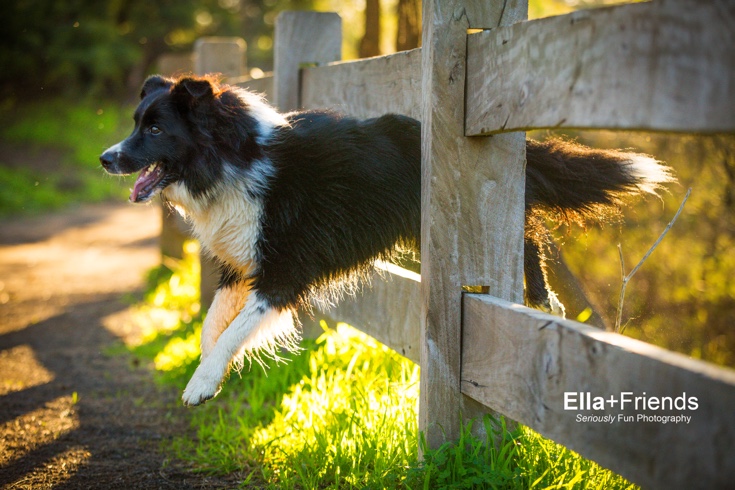How to help your Dog deal with separation anxiety

Have a dog in Sydney, Melbourne, or anywhere in Australia?
With our active lifestyles and constant in-and-out from home, separation anxiety indogs is verycommon. It occurs when your dog becomes distressed each time you leave them.
Some common signs of separation anxiety in dogs include drooling, pacing, whining, going to the toilet indoors, chewing things they aren’t meant to, and scratching doors. If your dog is also following you from room to room a lot and becomes withdrawn when you go to leave them, they may also suffer from some level of separation anxiety.
A good place to start is to identify what might be triggering your dog’s separation anxiety. Common triggers can include under-stimulation and a lack of routine. Other things such as the loss of another family pet, inconsistentengagement from the owner or a negative experience when they are left alone, can also set off your dog’s anxiety even if they have been ok previously.
There are several different ways you can help your dog deal with its separation anxiety. Some of the below tips and ideas are things you can do yourself, some include bringing in experts to assist you.
Simple tips
Environment
Creating a safe and familiar space for your dog will ensure they feel at home even when you are not. Whether it is in their pen, doghouse or simply the area where they sleep and spend a great deal of time, ensure that it is a comfortable and homely space.
This can mean filling the space with your dog’s toys, including a chew toy, which will help in terms of distraction. Leaving them some treats can also be helpful to have in your dog’s space.
According to theRSPCA, “The idea is to teach your dog that wonderful things happen when you are not there and that they do not need to follow you from room to room.”
Think about your own personal space or room – it’s an area you feel you can escape to and enjoy. It is the same for your dog.
According to the team at Snappy Removals, dogs often feel more comfortable when you make sure familiar objects are always around. They mention that “when clients are moving, they need to go in and out of their home a lot. What I’ve seen some dog owners do, is get their dog’s favourite toy and add some snacks inside them. I think the most common one I’ve seen are those Kong ones”.

Routine
Make sure your dog has a routine.
Keep your dog’s routine and your own routine as consistent as possible. Regular walks or trips to your local dog park are important for dogs that need a lot of exercise and who are home on their own a lot. Not only is exercise good for your dog’s health, but it also keeps them stimulated. They are more likely to rest and be content on their own once you take them back home after exercise.
One easy way to get more exercise for your dog, suggested by Patty from Wayne’s Landscaping, is to create dog-friendly outdoor spaces. Patty says that “dog owners love to do this, they’re able to let their fluff balls run around outside in the morning. Without actually spending the time to go for a proper walk”.

Tip for those dog owners who work long hours – consider asking a dog walker to assist with taking your dog for walks. Perhaps you can hire them to do so during the days when you’re busy at work. If you would rather someone you know well and trust to walk your dog, consider asking a friend or family member who may have the time to do so while you are busy.
Regular training in simple obedience will also help your dog. This not only benefits their overall behaviour, but will also help bring a more calming and settling influence to them, which means they are more likely to be ok when you are not around.
No Fuss
When you are leaving your dog alone, try not to make a big deal about it. This is the same for when you return home.
According to leading pet products retailer, Purina.com.au, “If you can, wait until your dog is calm and quiet, then casually go greet him and praise him for being calm and quiet.”
If you can, try to minimise your routine so you aren’t showing your dog that you are leaving. For example, if you tend to make a lot of noise and turn on a lot of lights in the early morning when you are leaving for work, try a quieter approach to getting ready, and only turn on the lights necessary.
Rewards
Rewarding your dog when they display an act of growth and improvement in terms of their behaviour is a great way to get them to keep going. According to Vetwest.com.au,“Use Command-Response-Reward interaction, which provides reward-based positive reinforcement for good behaviour.” It might be tough, but it’s important to ignore behaviours such as whining and barking, and only use this reward system when you have interacted with your dog when they are calm and not seeking attention.
By rewarding your dog when it displays good, calm behaviour, it will shift their mindset over time.
For more serious cases
If you feel your dog’s anxiety might be too much for only you to deal with, you can bring in expert assistance. Talk with your regular vet and see what advice they have that can help. They may also suggest you speak with a certified professional dog trainer or behaviour professional.
A certified dog trainer can take some of the training you have given your dog to the next level. They also aren’t as attached to your dog as you, so they can focus purely on the training and not be distracted by emotions. They are certified for a reason and can really help both you and your dog move forward.
Things to Remember
Patience is Key
It is important to remember to be patient during the process of helping your dog deal with its separation anxiety. Your dog won’t overcome its anxiety overnight. Advantagepetcare.com.au says, “Dealing with separation anxiety will require time and patience but with a bit of hard work and a behaviour modification plan, you can help your pet to better cope with your absence.”
Separation anxiety can look different from dog to dog, so it is important to keep that in mind when you are training your pet. What works for another dog may not work for your dog, and vice versa.
But one major danger for a lot of dogs, is that they will do what they can to follow you. Rick from Modern Day Concepts, a team of building designers for both residential and commercial properties, has had experience with pets escaping. Rick says that “when a dog does escape, you never know what can happen. That’s why it’s vital to make sure there is no possible way for your dog to sneak its way out or injure themselves in an attempt to”.
Acknowledge the Baby Steps
Because training and assisting a dog with separation is a gradual process, it is important to take the time to acknowledge your dog and yourself when you notice them making small steps forward. It’s all about the little wins!
Authors Bio:
Charles Bailey is a freelance writer. He is a university student based in Sydney. A Computer Science and Technology, Charles is also fond of fishing. When not on his desk, he is often outdoors going fishing with friends and colleagues.


0 Comments